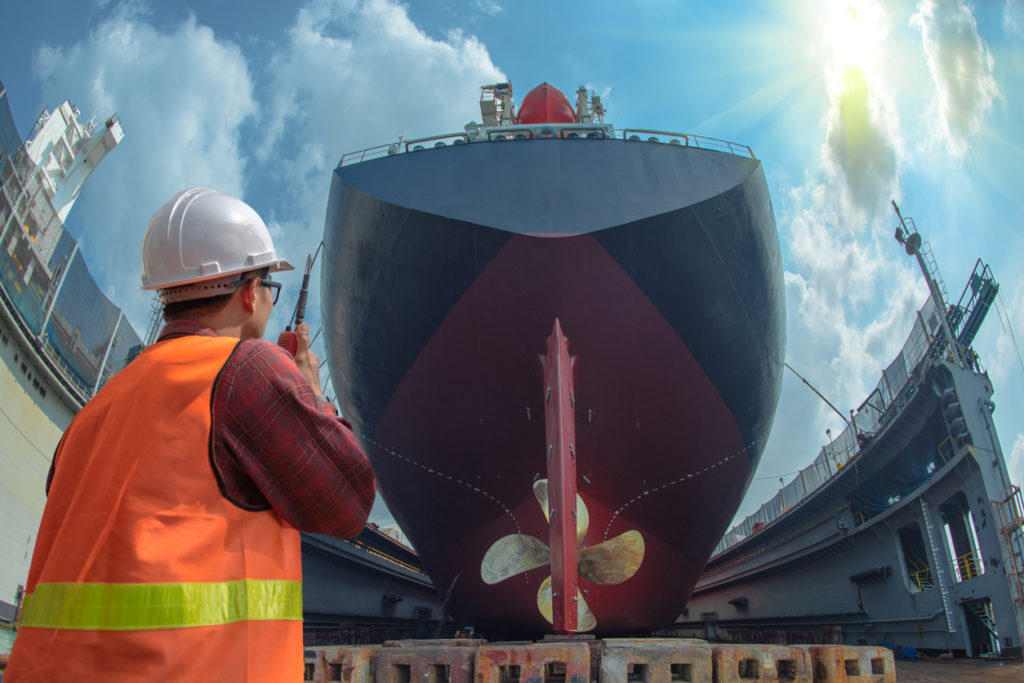
Dry docks are a necessary part of the maritime industry, and specifically as a part of the life cycle of most boats and marine vehicles.
A dry dock is a rectangular enclosure where boats can dock before the water is pumped out, in order to safely rest the vessel on dry land to help make needed repairs and modifications. In certain cases, they may also be referred to as graving docks, but the function is similar either way.
The daily functions of a dry dock include the repair and maintenance of critical equipment and engine parts aboard a vessel, activities that can prove dangerous if certain necessary safety requirements have not been met. Due to their very nature, dry docks are one of the most common sites of maritime accidents and maritime injuries, injuries which can prove life-changing – or even fatal in many cases.
Common Dry Dock Injuries & Accidents
Hazardous materials & gases
Dry docks, by design, tend to be fairly enclosed spaces without a lot of room for airflow. This, combined with the fact that many of the repairs performed inside a dry dock tend to release dangerous gases and vapors, can lead to the risk of asphyxiation, poisoning, and more. Dry dock workers are often exposed to dangerous gases which can cause hypoxia under the right conditions.
Accidental fires
Similarly, the enclosed conditions of a dry dock can lead to an increased risk of fire and combustion due to the vapors and chemicals being released. Oil tankers need to be properly cleaned, bulkheads need to be cleared of any flammable materials before the work can begin, and welding needs to be done under the safest possible conditions – i.e., free of any combustible liquids or vapors.
If proper care is not taken to ensure these areas are ventilated – and to prevent the release of sparks or flames near them – the risk of fire can be unacceptably high, and may place the dock workers in unnecessary danger.
Machinery accidents
Much of the work done to repair and maintain boats while in dry dock requires heavy machinery and equipment, machinery that requires a great deal of training to use properly. This machinery can range in size from bilge block systems and winches to move the boat, all the way to full-sized cranes for the transportation of cargo. The complex nature of these machines can lead to injury from a number of sources, particularly if the machinery hasn’t been properly maintained and inspected, or if an untrained worker is forced to use this machinery without the proper guidance or supervision.
Slipping and falling
Despite their name, dry docks can be the source of a lot of slip-and-fall accidents due to the amount of water that tends to be all around. The movement of water through the dock can create a great risk for injuries and accidents, even if the culprit is as simple as a puddle on the floor left over by some splashing water, or oil from a repair job that hasn’t been properly cleaned up. If these puddles aren’t cleaned, or marked off as being hazardous, unsuspecting workers could find themselves suffering injuries as a result.
Lack of signage
Similarly, the dry dock could have a number of areas where accidents can occur due to standard working conditions, and these areas need to be properly indicated through signage and warnings to keep workers aware and safe. A lack of warning signs is a danger in any work environment, but doubly so in a dry dock which can frequently encounter a variety of unsafe conditions, and it is the responsibility of the dry dock’s owner to properly mark these dangerous areas.
If you have fallen victim to any of these injuries, or similar injuries, while working on a dry dock, the maritime injury lawyers of O’Bryan Law can help. Contact O’Bryan today with the details of your injury, and let us fight for you.



